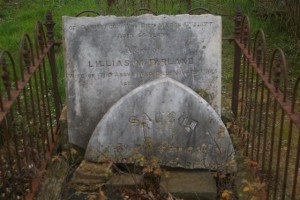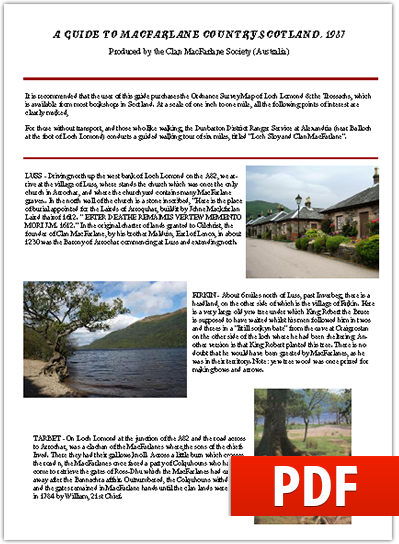During the week of 16-22 June 2014, the town of Bannockburn in Victoria will host a week of fun community activities, culminating in the main event on Sunday 22 June – a festival including a re-enactment of the 1314 battle to be held at the Bannockburn Golf Club.
The festival will be a truly remarkable event for the township of Bannockburn and the Golden Plains Shire.
For further information please visit
www.battleofbannockburn2014.com.au

Ships’ Passenger Lists
If you are trying to find the ship your ancestor arrived on in Australia, you need to look at the passenger list of ships that arrived here.
A good place to start is with a guide to immigration records and you can’t go past Cora Num’s excellent site:
Cora has also published the following books on the subject:
Shipping and Migration Research on the Internet – 2012
This book is designed to help you find arrival and migration records for those who came to Australia before 1924.Online resources such as indexes, databases, digitised original records, newspapers, digitised microfilm, research courses and eBooks are included with details on how to use them.
How Did They Get Here? Arrivals after 1924 – 2nd edition 2012
This book is designed to help you find arrival and migration records for those who came to Australia after 1924.Online resources such as indexes, databases, digital records, newspapers and eBooks are included with details on how to use them effectively.
If you have done the hard yards and walked through waist high grass amidst tumbling down headstones in a lonely cemetery in the country to find the grave of a relative, then you will certainly appreciate a service which makes this a choice rather than a necessity.
For free digital photographs of headstones in cemeteries in Victoria and for a few cemeteries in Western Australia, South Australia and New South Wales, as well as a selection of War Memorials in Victoria and New South Wales, visit Carol’s Headstone Photographs:
http://www.rootsweb.com/~
Even if you don’t know which cemetery your relative is buried in, you can just enter the surname in the search option at the bottom of the page to bring up a list of cemeteries which the name appears in. If you can’t find the name in the list, then they are either not buried there, or they have no headstone.In this case you will need to contact the individual Cemetery Trust.
I searched Carisbrook cemetery in Victoria for the surname McFarlane and found “McFARLANE Lillias”.I then emailed Carol quoting the name and the cemetery and she sent me the photograph by email.As you can see in the photograph the headstone has broken in half but is still resting on the grave. Although the name of Lillias McFarlane (died November 29, 1883) is clearly visible, the inscription for her husband (Duncan?) has broken in half with the stone and is difficult to make out.His name therefore did not appear in the index. Doing a general search on “McFarlane” brought up 35 separate listings in the Cemetery Index, another 14 for “MacFarlane” and there are numerous other spellings and sept names that could be searched on. The index even shows up instances where the name McFarlane has been included as a middle name.Why not check the list for one of your relatives?
I found the turnaround time amazingly fast – Carol usually sends them the same day or within one or two days. Remember this is a voluntary service though, so response times may vary. Please don’t forget to thank Carol for providing this fabulous service.
The site is regularly updated and Carol posts updates on her blog at: http://carolsheadstonephotographs.blogspot.com/
THE BONNIE BANKS O’ LOCH LOMOND
The Bonnie Banks O’ Loch Lomond is just one of over 40 Scottish favourites, complete with lyrics and links to YouTube videos, that can be found in the 2012 Burns Supper Interactive Songbook, now available as a free download from www.abroadscot.com
“Captain Macfarlane, D.S.O., of the Transvaal Mounted Rifles, whose name was reported in Tuesday’s papers as among the killed at the engagement with the Zulus at Mome Mountain, was well known to Renmark men who served in the Boer war. A native of Angaston, and eldest son of Mr.D.Macfarlane, now of Adelaide, who is one of the Directors of the New Era fruitgrowing company on the Murray, near Morgan, he was one of the most gallant of the Australians who distinguished themselves in the late war in south Africa.He was a member of the first Westralian contingent and went out again as a lieutenant in, we believe, the 5th South Australian contingent.He was universally esteemed for many manly and soldierly qualities, and was regarded by Brigadier de Lisle as one of the smartest men on his staff.Not only by his bereaved parents and immediate relatives, but by all who knew him, his loss will be deplored and mourned.”
Does anyone relate to this family of Macfarlanes referred to in the foregoing press cutting about the Boer War (1889-1902)?
The New Era Fruitgrowing Company at Morgan, SA flourished from about 1900 to 1926.And we would be most interested to find some data concerning Macfarlanes in that region.Captain Macfarlane was by all accounts a real war hero and his story would make good reading.
If anyone can offer more details on these pioneer clansfolk, please contact president@clanmacfarlane.org.au or leave your comment below.
With the outbreak of the American War of Independence (1775-83) yet another great flurry of recruiting began in the Highlands.Although slow to begin with, there finally emerged nine new Highland Corps, the names of which are as follows:
71st Fraser’s Highlanders
73rd Lord MacLeod’s (Argyll) Highlanders
74th Barbrecks Highlanders
76th Lord MacDonald’s Highlanders
77th Duke of Atholl’s Highlanders
78th Lord Seaforth’s Highlanders
81st Aberdeenshire Highlanders
84th Royal Highland Emigrants
? Perthshire Highlanders
Read the full article below, (pages extracted from MacFarlane’s Lantern No.120 – December 2011).
The Scots in Wartime – Part Two
Until the end of World War 2, a private soldier in the British Army was paid little more than a shilling per day plus keep, for which he was expected under oath to serve his king and country to the extent of laying down his very life.Successive British governments greedily exploited the loyalty of thousands of ordinary men (and more recently women) who volunteered their lives to join the ranks – and when actual volunteers were seen as insufficient for the needs of Whitehall, thousands more were ‘legally’ pressed into service to defend and uphold British vested interests at home and overseas.Since the Union of the Crowns, 1603, Scotland also provided — possibly more than — its fair share of what came to be described as ‘human cannon fodder’, all in the greater interest of an ever-expanding British Empire which came to dominate vast areas of the globe and which were often depicted coloured pink on most world maps!
In the September isssue of our newsletter MacFarlane’s Lantern we are proud to present a brief look at how Scottish soldiers have been depicted through the ages, giving some insight into the more than worthy contribution the Scottish nation has given to the steady development of what we call modern human society across the world.Even in these so-called enlightened times, many Scots and their descendants still rally to the Colours and battalions in countries worldwide.
This article has been extracted from the newsletter for the benefit of all.
Are you a retired piper or drummer who would like to rekindle your interest in a social non-competitive environment?
Are you a secondary student or interested adult who would like to learn to play the great highland bagpipe, or drums to accompany same?
The Clans O’ the West Highland Pipe Band are looking for new members.They are a social band based in the Shire of Melton, Victoria. The band has been performing and playing together since 1985 and all members of the band wear different coloured tartans to represent their own clans.
For more information have a look at their poster New Members Wanted or visit the website: www.clansothewest-highlandpipeband.com
In the June issue of the ‘Lantern’ we told the story of James MacFarlane (b.1796) who migrated from Arrochybeg Farm, Loch Lomond-side, 1824 and set up the first cattle station at Omeo, Gippsland, Victoria.We now tell of his brother Duncan MacFarlane (b.1798) who became one of the very first settlers in South Australia.
Once again, the article has been extracted in full from the newsletter and made available below as a pdf document for the benefit of those who are not members and therefore unable to access the newsletter via the Members Area.
Arrochybeg to Australia – Part Two
As we delve further into our Clan’s history, we come across more and more references to those clan folk who were settled along the eastern shores of Loch Lomond.Thus our lead story in the June 2011 issue of the Australian “MacFarlane’s Lantern”, Issue No.118, concerns two MacFarlane brothers from the small farm of Arrochybeg, Buchanan parish, Stirlingshire, who were among the many Scots that migrated to Australia during the mid-19th century and contributed greatly to the development of this huge country.
James (b1796) and Duncan (b1798) were the sons of Walter and Marjory MacFarlane (nee Colquhoun) who farmed Arrochybeg, beside Loch Lomond.Walter (1755-1836) was a seventh generation direct descendant of Andrew Dubh MacFarlane, 2nd Laird of Gartartan, Gartmore, Stirlingshire, which, in turn, linked the family to the main line of MacFarlane Barons of Arrochar and to the ancient Earls of Lennox – by all accounts a pedigree to be proud of.
Part one of this article deals with James, who was a pioneering cattleman in Victoria.His brother Duncan, who made his own mark in South Australia, will feature in the next (September) issue.
The article has been extracted in full from the newsletter and made available below as a pdf document for the benefit of those who are not members and therefore unable to access the newsletter via the Members Area.


